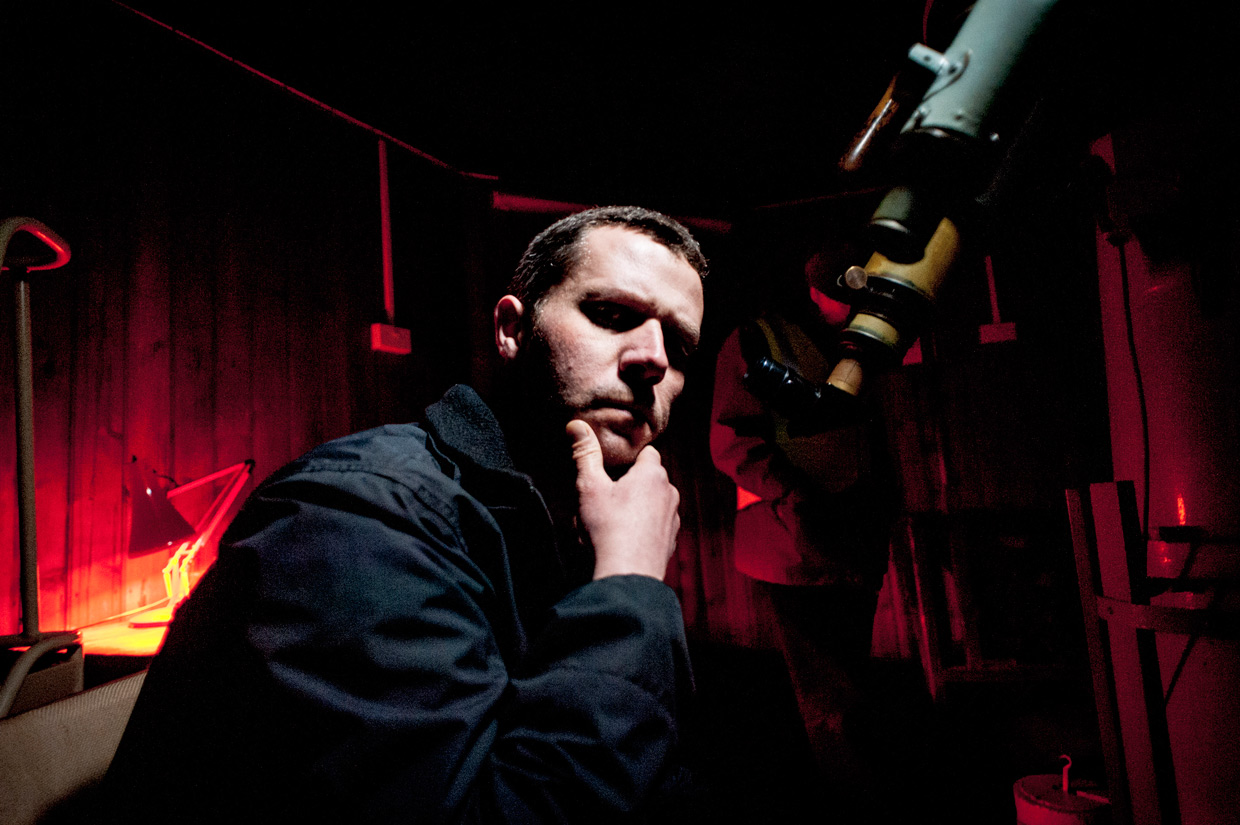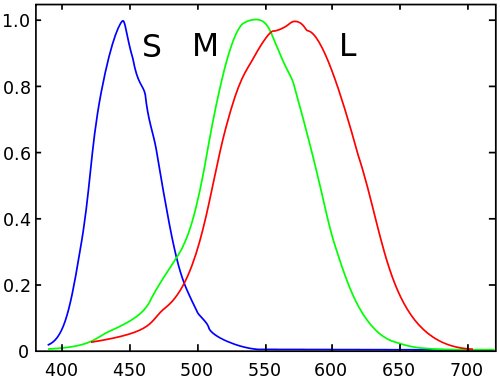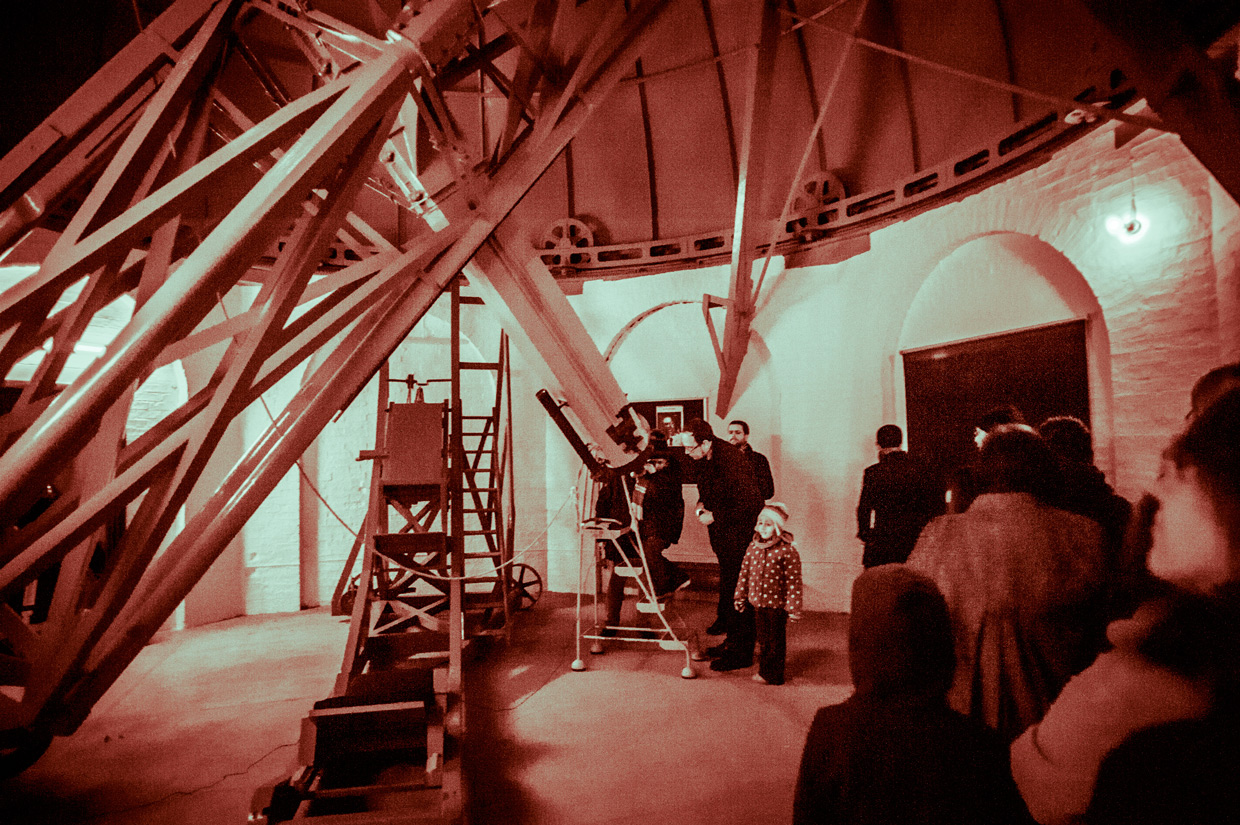
Your cones in the eye come in three different types and are responsible for your colour vision, but when it gets darker the rods which are more light sensitive take over. If you are out on a dark night and need some light then you have to be careful, since bright light can desensitise your rods. You can see the light sensitivity of the different photo receptors in the figure below. By using red light of relatively low intensity we can preserve our night vision, which is useful when you want to look at things like stars in the sky. That is why the Cambridge University Institute of Astronomy has all its telescopes lit with red light.

On Wednesdays the Institute of Astronomy opens its doors in the evening to the public. Yesterday a group of curious post docs decided to go and see what they did there. The evening started with a lecture about the weather in space. It centred around the role of the sun, both for the weather on earth, but also in space and on other planets. The lecutre was well attended, the lecture hall that could hold 180 people filled up, and they had set up a projector outside for those that were not lucky enough get a seat.
Afterwards we headed up the hill to look at the stars. They had two big telescopes open, and several smaller telescopes out on the lawn. A group of astronomy enthusiasts were there to lecture about the planets and stars as well as to show the telescopes. They used green lasers to point out stars in the sky which I thought was a pretty cool idea. We had to queue to get into the telescopes.
Before I left home I had switched out my 50 mm lens for the 20 mm lens. I was mentally envisioning trying to capture the domes, or the sky overhead, and that would be much more impressive with a large field of view. In retrospect I should probably have gone much closer to everything I was photographing, to get a more dramatic effect. People had been asked to bring red lights, which I had missed, so I had my new white LED video lamp with me. It shines brighter than a thousand stars (at least as seen from the earth), so for the first bit I left it tucked away in my camera bag. I also turned off the focus assist light in order not to blind anyone, which meant that my auto focus was struggling to lock on. The aperture was at 2.8 which was as large as this lens went, and ISO got pushed up towards several thousand. I went for a shutter speed around 1/30 seconds, which is in line with the rule of thumb that you should have at least 1/focal length to keep things sharp.
The big domes were illuminated by red light, which made my first few photos inside completely red and black. To be honest I was quite happy when someone took out their mobile phone to photograph another person looking through the telescope. I quickly snapped a shot, and that was a huge improvement. So when it was our turn to look through the telescope, we also cheated and used both a mobile phone and a tiny flashlight to shine on the scene. At this point I still had my LED light tucked away, but later when it was only the post docs in the smaller dome I took it out. What I liked about those later shots was that the subject was well lit, while the background still had the original red light, separating it from the foreground.
We also snuck away towards a big house at the back with some interesting pillars to take a few additional photos. For example using the LED lamp to illuminate the background, thus creating a dark silhouette of the person in front. We played around with artificially creating mist by some heavy breathing. It did sound a bit weird, with lots of laughter in between shots, but made for a cool effect. Thanks Paul, Paul, Brian and Alice for being so fun and creative.



From what I gather the observatory is open most Wednesdays to the public, you can find more about it on the Institute of Astronomy’s webpage about public engagement. The lecture should always be given, but depending on the weather they may or may not open up the telescopes. There is also a handy live all sky camera to check the level of clouds before going.
– Johannes
Be First to Comment